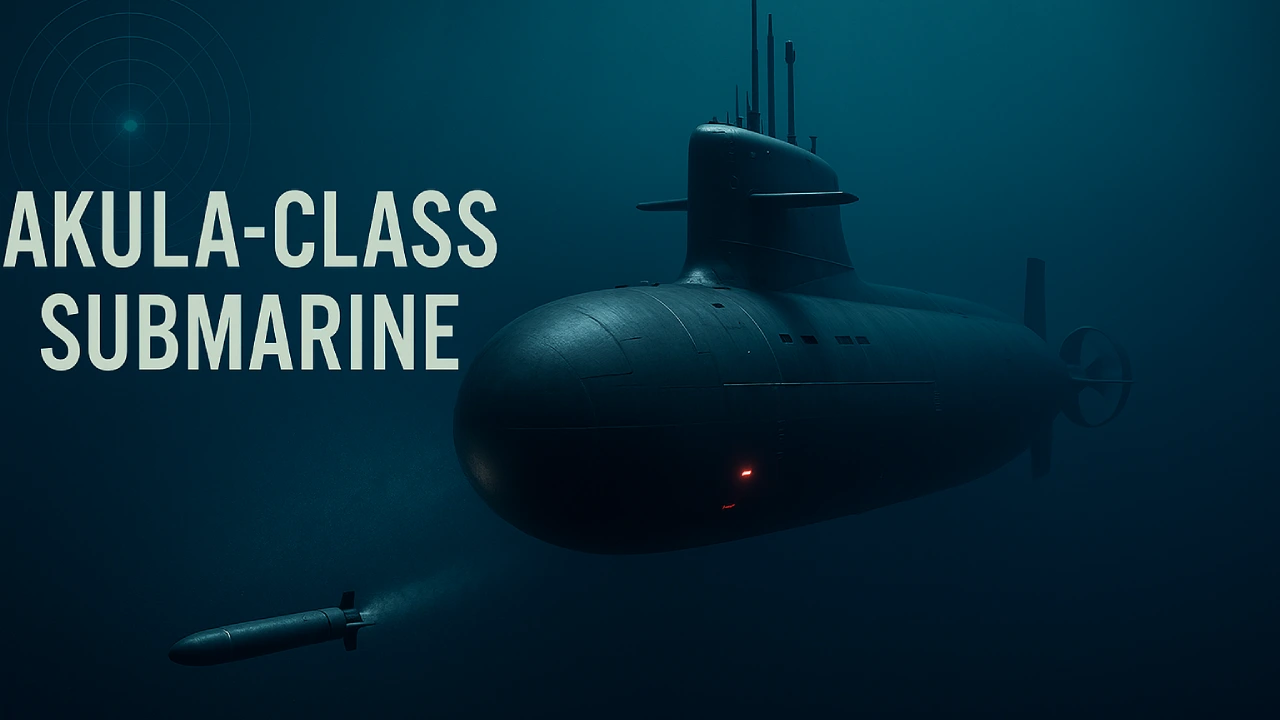The Akula-class submarine, known in Russia as Project 971 Shchuka-B, marked a pivotal moment in Soviet underwater warfare. Introduced in the late Cold War era, these nuclear-powered attack submarines (SSNs) were designed to challenge the U.S. Navy’s Los Angeles-class. With their advanced stealth, lethal armament, and deep-sea capabilities, Akula-class submarines became the backbone of Russia’s undersea fleet for decades.
In this blog, we’ll explore what made the Akula-class such a formidable force beneath the waves—and how it compares to Western rivals like the Seawolf-class. We’ll also look at India’s use of this platform and the global strategic significance of Akula submarines.
What Is the Akula-Class Submarine?
Akula (Russian: Shchuka-B, meaning “pike”) is a fourth-generation nuclear attack submarine series built by the Soviet Union and later Russia. These submarines were developed to outmatch Western subs in both stealth and combat capability.
Fun Fact: Although “Akula” means “shark” in Russian, it was actually NATO that gave this nickname. The Soviet name “Shchuka-B” refers to a freshwater fish.
Key Design Features
Double Hull System
One of Akula’s standout design choices is its double hull structure:
- Inner pressure hull keeps the crew safe under deep water.
- Outer light hull offers flexibility in external shape and extra buoyancy.
This gives the Akula a higher reserve buoyancy compared to most Western submarines, improving survivability.
Stealth & Noise Reduction
Stealth is critical for any submarine. The Akula made major strides in this area:
- Anechoic tiles on the outer hull absorb sonar.
- Floating floors and isolated machinery reduce internal noise.
- Special propellers, crafted with Japanese machinery, minimize cavitation and sound.
- Active noise-canceling systems add another layer of quietness.
The Akula-II variant is even quieter and is sometimes considered stealthier than the Seawolf-class in specific situations like coastal missions.
Sonar System: MGK 540
- Detects targets in active and passive modes.
- Tracks range, bearing, and speed.
- Advanced filtering helps classify targets and ignore background noise.
Many naval simulation experts praise the Akula’s sonar interface for being easier to interpret than its Western counterparts.
Propulsion
- Reactor: 1 × OK-650B nuclear reactor (190 MW thermal)
- Speed: 33–35 knots submerged | 10 knots surfaced
- Max Depth: ~600 meters
- Backup Power: Diesel generators for emergencies
Variants: Akula I, Improved Akula, Akula II
| Variant | Notable Boats | Features |
|---|---|---|
| Akula I | Bars, Puma | Base model with standard tech |
| Improved Akula | Leopard, Volk | Quieter and better sonar |
| Akula II | K-157 Vepr | Longer hull, most advanced tech |
Only one true Akula II—the Vepr—was completed, with others partially built and repurposed for newer submarines.
Lethal Armament
Akula submarines are armed to strike both land and sea targets:
Torpedo Tubes
- 4 × 533mm: Torpedoes, RPK-6 missiles, mines
- 4 × 650mm: Larger torpedoes (Type 65), RPK-7 missiles
(Adaptable to fire 533mm torpedoes)
Missiles
- SS-N-21 Granat: Nuclear cruise missile with a range of 3,000 km
- SS-N-15 Starfish: 45 km anti-ship range
- SS-N-16 Stallion: 100 km range with torpedo/nuke payload
- Kalibr Missiles: Modern addition to the Vepr after its 2020 overhaul
Air Defense
- Portable Strela SA-N-5/8 launcher with 18 missiles
Akula vs. Western Submarines
| Feature | Akula-Class | Seawolf-Class |
|---|---|---|
| Length | ~320 ft | ~370 ft |
| Displacement | ~9,500 tonnes | ~12,000 tonnes |
| Crew | Fewer | More |
| Max Depth | ~600m | ~610m |
| Stealth | Very Quiet (esp. Akula II) | Seawolf considered quieter |
| Armament Flexibility | High | High, with better automation |
Indian Navy and the INS Chakra Program
India leased a modified Akula-II submarine named INS Chakra (ex-Nerpa) in 2012 for 10 years. This gave India valuable experience operating nuclear-powered attack submarines (SSNs). However, the lease was marred by:
- A fatal gas leak during sea trials
- Long delays due to system upgrades
Upcoming: Chakra III
India is expected to receive another Akula-II sub (Chakra III) from Russia in a deal worth around $3 billion. However, the project has been delayed due to the ongoing Russia-Ukraine conflict.
Modernization and Future Outlook
- K-157 Vepr, the only Akula II, was modernized in 2020 with new weapons and systems.
- Expected to remain in service for another 25–30 years.
- Akula-class continues to serve in the Russian Northern Fleet, remaining a key asset until fully replaced by Yasen-class submarines.
Final Thoughts
The Akula-class submarine represents a remarkable chapter in undersea warfare. Built during a time of intense rivalry, it combined stealth, power, and survivability in a way the Soviet Navy had never done before. Even today, modernized Akulas like the Vepr and international leases like India’s INS Chakra show the platform’s enduring relevance.
As new threats emerge across global waters, nuclear-powered attack submarines like the Akula remain at the center of naval strategy—for Russia, India, and beyond.







